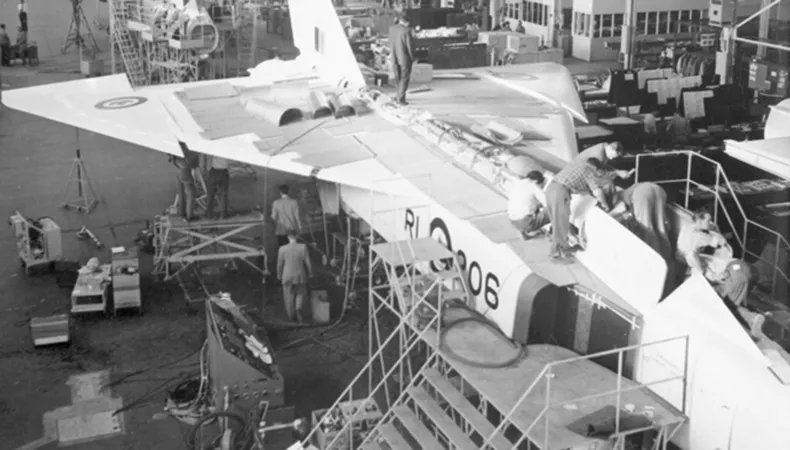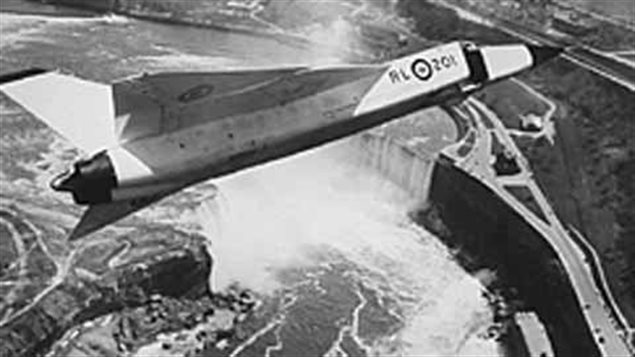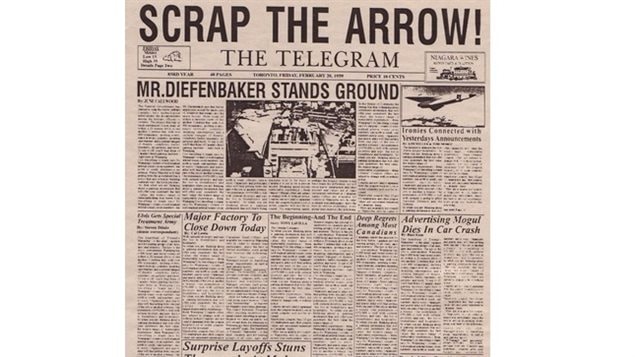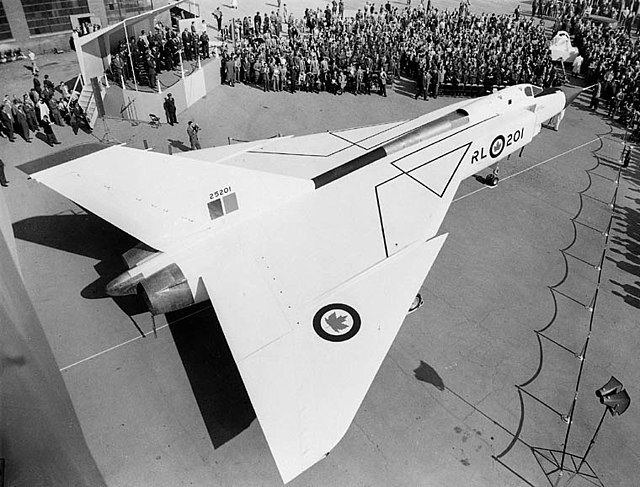Welcome to the journey of The Arrow, an iconic symbol of innovation, progress, and Canadian engineering prowess. Since its inception on February 20, 1959, The Arrow has carved a remarkable path in aviation history, leaving an indelible mark that resonates even today. Join us as we delve into the captivating story of The Arrow, from its inception to its enduring legacy.
Unveiling the Legacy of the “Black Friday” at AV Roe: A Historical Dive
In the annals of history, February 20th, 1959, marked a pivotal moment – a “black Friday” that sent shockwaves through the corridors of the AV Roe aerospace plant near Toronto. Let’s embark on a journey to unravel the layers of this significant event that continues to reverberate through time.
The Cold War Setting the Stage
Backtrack to 1953, where the geopolitical landscape was overshadowed by the looming specter of the Cold War. Tensions between the Western bloc and the Communist Soviet Union were palpable, with the threat of Soviet bombers breaching North American airspace casting a shadow of uncertainty.
The Quest for Superior Interceptors
Amidst this backdrop of geopolitical tension, the Royal Canadian Air Force (RCAF) found itself in dire need of a cutting-edge interceptor to safeguard its skies. Enter the call for tenders labeled “AIR 7-3,” a directive that demanded not just incremental improvements but a quantum leap in interceptor technology.
AV Roe’s Audacious Response
In a move that defied conventional wisdom, AV Roe boldly accepted the challenge presented by “AIR 7-3.” The specifications laid out were nothing short of audacious – an all-weather interceptor capable of Mach 1.5 at 50,000 ft, withstanding temperature extremes ranging from scorching heat to bone-chilling cold.
A Race Against Time and Physics
Armed with determination and ingenuity, AV Roe embarked on a relentless pursuit of innovation. Drawing upon years of expertise in fighter design, dating back to 1951, the team set out to pioneer a concept that pushed the boundaries of aeronautical engineering.

The Birth of a Revolutionary Design
What emerged from the crucible of creativity was nothing short of revolutionary – a delta-winged marvel that defied conventional aerodynamic principles. This groundbreaking design represented a paradigm shift in fighter technology, setting a new standard for performance and versatility.
The Impact of “Black Friday”
However, amidst the fervor of progress, tragedy struck on that fateful Friday in 1959. An announcement from Canada’s Parliament sent shockwaves through the AV Roe plant, signaling an abrupt halt to operations. The repercussions of this decision would echo through the corridors of time, leaving an indelible mark on the aerospace industry.

Legacy and Lessons Learned
As we reflect on the events of “Black Friday” and its aftermath, we are reminded of the indomitable spirit of human innovation in the face of adversity. The legacy of AV Roe serves as a testament to the power of perseverance and ingenuity, inspiring future generations to reach for the stars.

- The Genesis of The Arrow: The Arrow’s story begins amidst the fervor of post-war aviation advancements in Canada. Conceived by A.V. Roe Canada (Avro), The Arrow was envisioned as a cutting-edge interceptor aircraft, designed to safeguard Canadian skies during the Cold War era.
- Innovation Takes Flight: With a team of brilliant engineers and visionaries at its helm, Avro spared no effort in pushing the boundaries of aerospace technology. The Arrow emerged as a testament to Canadian ingenuity, boasting revolutionary features such as delta wings and powerful turbojet engines.
- Rise to Prominence: As The Arrow took to the skies, it captured the imagination of aviation enthusiasts worldwide. Its unmatched speed and agility earned it a reputation as one of the most advanced aircraft of its time, showcasing Canada’s capability to compete on the global stage.
- Tragic Demise: Despite its initial success, The Arrow faced an untimely demise that shook the aviation industry to its core. In a controversial decision, the Canadian government abruptly canceled the Arrow program in 1959, sparking widespread outcry and leaving behind a void that would reverberate for decades.
- Enduring Legacy: Although The Arrow’s production was halted prematurely, its legacy endures through countless tributes, documentaries, and commemorations. The Arrow continues to symbolize Canada’s pursuit of excellence in aerospace engineering and serves as a poignant reminder of what could have been.
- Preserving History: Efforts to preserve The Arrow’s legacy have been ongoing, with enthusiasts and historians alike working tirelessly to unearth new insights and preserve artifacts. Museums across Canada proudly display remnants of The Arrow, allowing future generations to appreciate its significance.
- Inspiring Future Generations: The Arrow’s story serves as a source of inspiration for aspiring engineers and aviators, highlighting the importance of innovation, perseverance, and national pride. Its tale resonates beyond borders, reminding us of the power of human ingenuity to defy the odds.
- Honoring the Visionaries: Behind every great achievement lie the tireless efforts of visionary individuals. The Arrow owes its existence to the brilliance of engineers like Jim Chamberlin and the dedication of countless workers who poured their hearts into its creation.
- Looking Ahead: As we reflect on The Arrow’s journey spanning from February 20, 1959, to today, we are reminded of the enduring impact of innovation and the importance of preserving our heritage. While The Arrow may no longer grace the skies, its spirit lives on in the hearts and minds of all who cherish its legacy.
In conclusion, The Arrow stands as a testament to Canada’s rich aviation history and its enduring quest for excellence. From its humble beginnings to its lasting legacy, The Arrow continues to captivate and inspire generations, reminding us of the boundless possibilities that lie within the realm of human achievement. As we honor its legacy, let us also celebrate the spirit of innovation and resilience that it represents, ensuring that The Arrow’s story remains etched in the annals of history for generations to come.
As we reflect on The Arrow’s journey spanning from February 20, 1959, to the present day, we are reminded of the enduring significance of its legacy. While The Arrow may no longer grace the skies, its spirit of innovation and resilience lives on, inspiring future generations to reach for new heights.











As The Arrow took to the skies, it captured the imagination of aviation enthusiasts worldwide